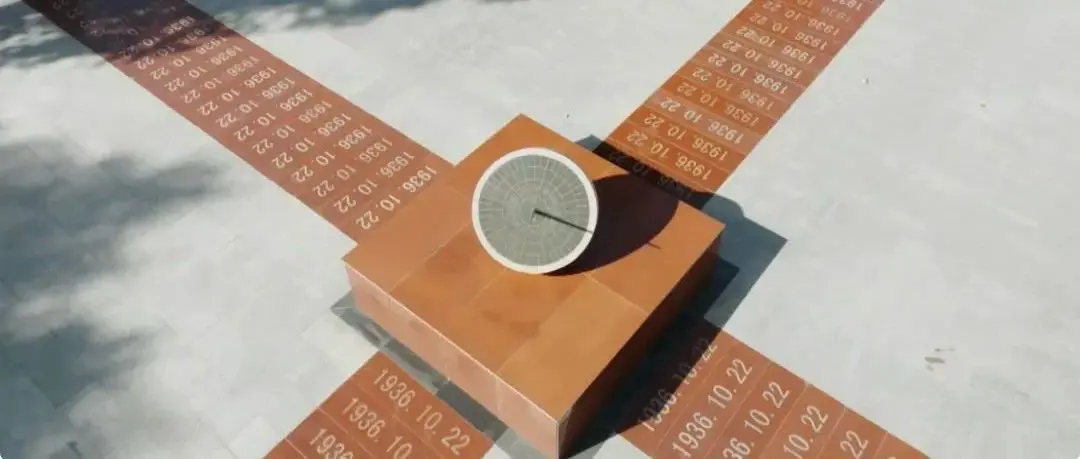“1936.10.22”

In the month of the year, a red army crossed the Gan River in southern Jiangxi, embarking on a great expedition. A month after the Central Red Army set out, the 25th Red Army left the Dabie Mountains. The following year, the Fourth Front Army set out, followed by the Second and Sixth Armies initiating strategic shifts. In the year, the four Red Army units, having survived countless perils, finally converged on the Loess Plateau. This great expedition has an immortal name: the Long March!
"Journey of Twenty-Five Thousand Miles" Episode 10↓
The 25th Red Army was the first Red Army unit to reach northern Shaanxi. In the month of the year, the 25th Red Army entered the heart of the Qinling Mountains, and after numerous battles, established the revolutionary base area of Hubei-Henan-Shaanxi. This was the only base area established by various Red Army forces during the Long March that lasted until the full-scale outbreak of the War of Resistance against Japan. In the month of the year, the main force of the 25th Red Army left the Hubei-Henan-Shaanxi base area and continued the Long March. On the 15th day of the month, they joined forces with the Red Army of Shaanxi-Gansu in Yongping Town, Yanchuan County, Shaanxi. They were the first Red Army unit to reach northern Shaanxi during the Long March.
The largest Red Army martyrs' cemetery in the country rests the spirits of famous martyrs. When the Red Army 25th Corps was on the Long March, the Red Army 4th Front Army, far in western Sichuan, was fighting a bloody battle to defend their base area. By the end of the year, the Red Army 4th Front Army established the Sichuan-Shaanxi Revolutionary Base Area with Bazhong as its center. In less than a year, the Red Army 4th Front Army grew to over 10,000 men, enduring numerous arduous and bitter battles, with many Red Army soldiers sacrificing their lives on this land. The Sichuan-Shaanxi Revolutionary Base Area Red Army Martyrs' Cemetery was originally built by the Red Army 4th Front Army soldiers for their fallen comrades. Today, it is the largest Red Army martyrs' cemetery in the country, resting the spirits of famous martyrs, the majority of whom left no names, with only a bright red star on their tombstones.
In the spring of the year, the Fourth Front Army of the Red Army forcefully crossed the Jialing River and advanced westward. In the month, they met with the Central Red Army in Maogong, Sichuan. After that, they engaged in over a year of fighting in the Sichuan-Tibet region, finally reaching the Shaanxi-Gansu area in the month of the year, marking the end of the Long March. Today, every Qingming Festival, children come to the Red Army Martyrs' Cemetery in the Sichuan-Shaanxi Revolutionary Base, to paint the red stars on the tombstones. Under the relay of the children, one by one, the red stars shine brilliantly.
The sundial in Jiangtaibao Town, Ningxia, is engraved with "...". Shortly after the meeting of the Red Fourth Front Army and the Central Red Army in Maogong, Sichuan, in the month and year, the Red Second and Red Sixth Corps met with the Red Fourth Front Army in the Ganzi region of Sichuan. Subsequently, the Red Second and Red Sixth Corps, along with the Red 32nd Army, were ordered to be elevated to the Red Second Front Army, marching north alongside the Red Fourth Front Army. On October 8th, the Red First Army and the Red Fourth Front Army met in Huining, Gansu, marking the formation of the major convergence of the three main Red Army forces. In the golden autumn, under the clear skies, the unique brick pagoda in the small town of Huining, Gansu, witnessed this historic moment. Following this, on October 22nd, in Jiangtaibao, 100 kilometers away from Huining, Gansu, the town was adorned with lanterns and festive decorations, filled with joyous laughter, as the Red First and Red Second Front Armies met here. In Jiangtaibao Town stands a sundial, engraved with "..." to commemorate this special day. The meeting in Jiangtaibao marked the successful conclusion of the Long March of the Red Army.
After numerous battles and campaigns, completing a great expedition, the four Red Army units, which had survived nine deaths out of ten, accomplished a great journey over two years. Throughout the long march, the Red Army soldiers engaged in over a hundred significant battles and campaigns against the enemy, crossed nearly a hundred rivers, scaled over a dozen perilous mountain peaks, traversed the vast grasslands known as the "death trap," challenged the limits of human survival with indomitable will, and staged a magnificent "living war drama" in the annals of world military history, creating an awe-inspiring miracle of human spirit. The great Long March spirit forged by the revolutionary pioneers with their lives and blood is a precious spiritual wealth left to us. The formidable pass seems as hard as iron, but now we stride forward from the beginning. Today, we walk on the Long March road of the new era, where each generation has its own Long March road to walk, and each generation must walk its own Long March road well!

